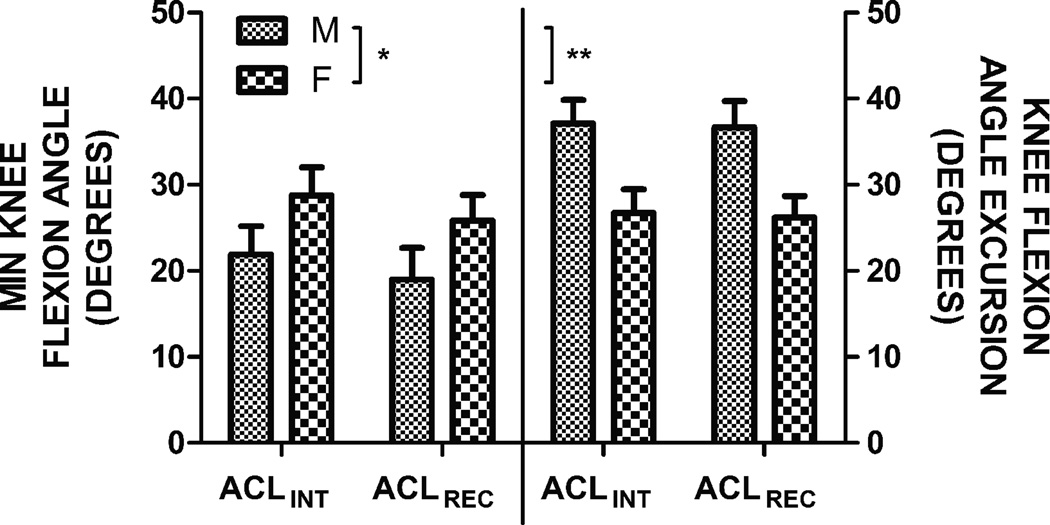Figure 4.
Left y-axis, minimum knee flexion angle for ACLINT and ACLREC male and female subjects. Minimum flexion occurred at or immediately following ground contact. No statistically significant differences between gender and condition were observed for minimum knee flexion angle values; however, the * represents a p-value of 0.054 denoting an apparent gender difference. Right y-axis, knee flexion angle excursion for ACLINT and ACLREC male and female subjects. Knee flexion angle excursion was defined as the change in knee flexion angle from minimum flexion to maximum flexion. A statistically significant difference was observed between male and female subjects. This is highlighted by the **, which represents a p-value of 0.002. The minimum knee flexion angle and knee flexion angle excursion units are in degrees. It should be noted that these data were obtained from the OMC system.

